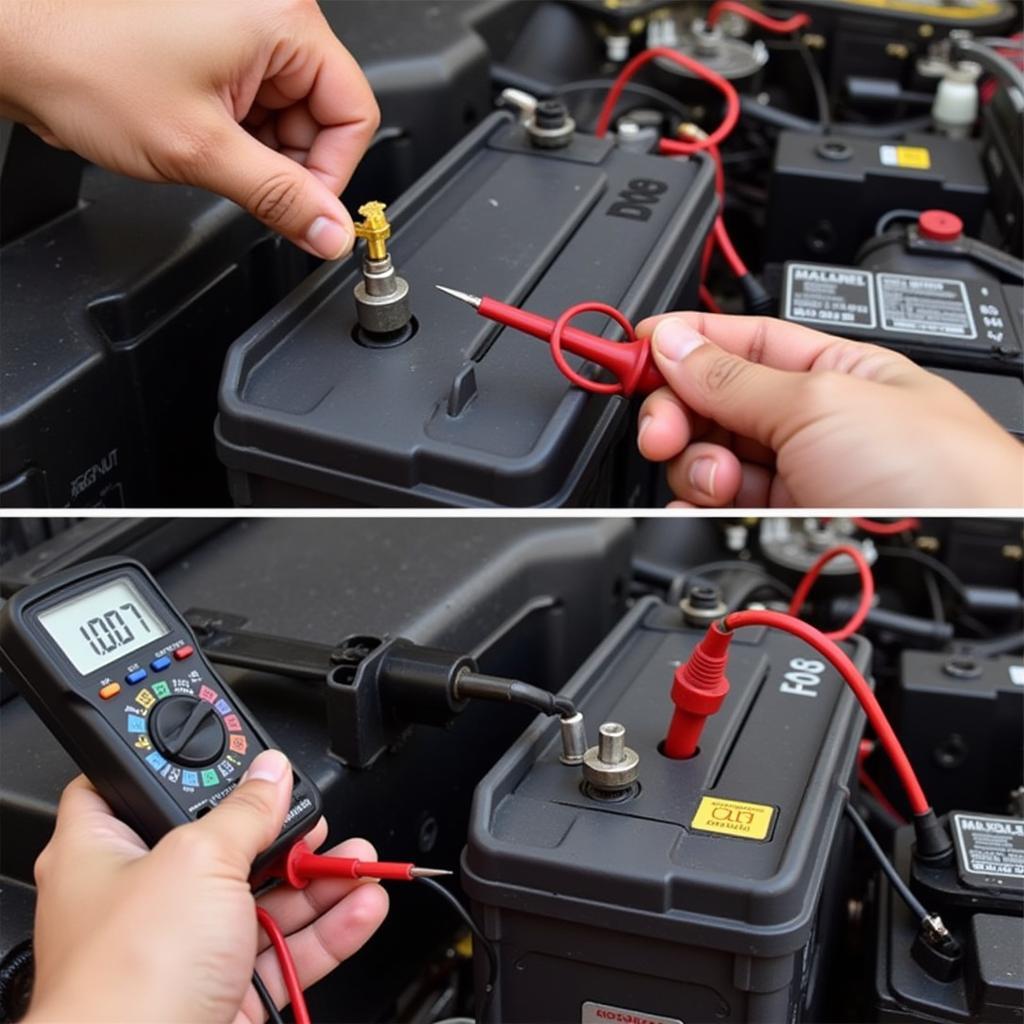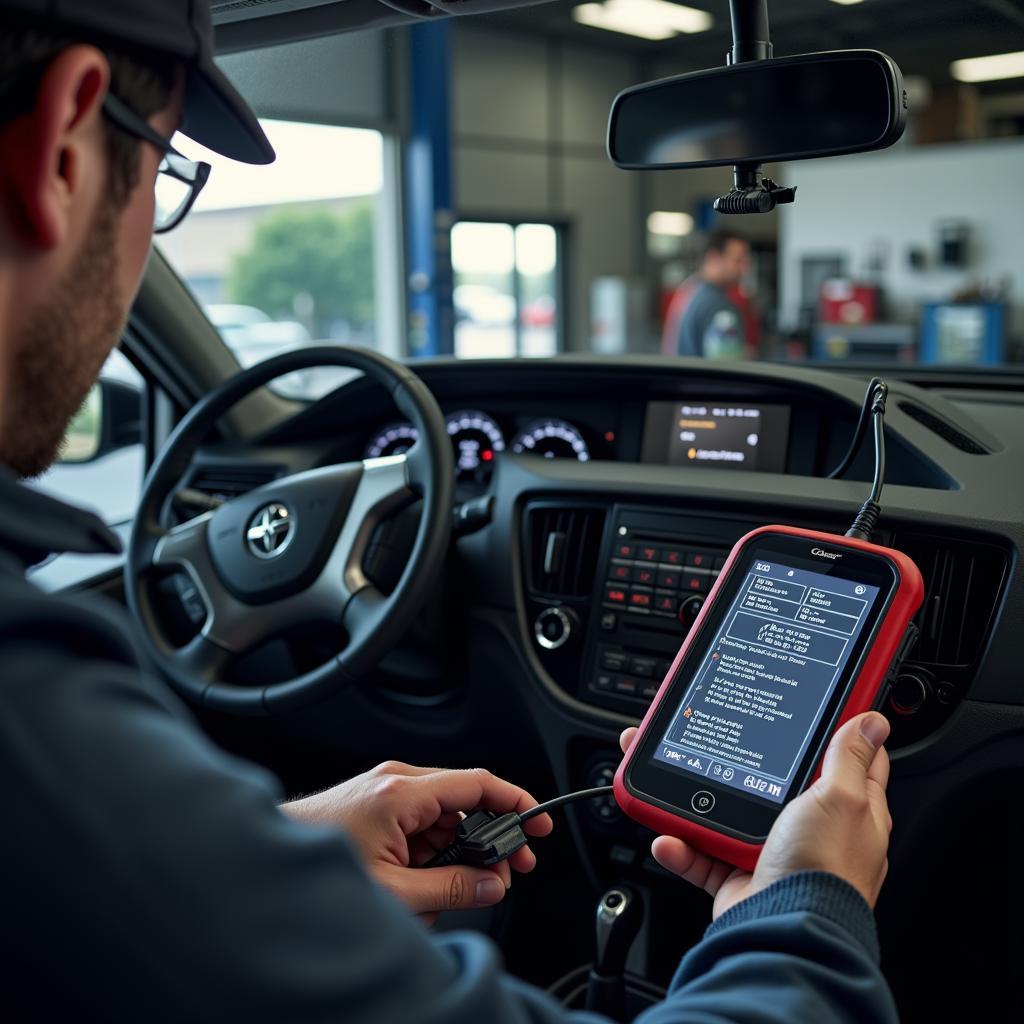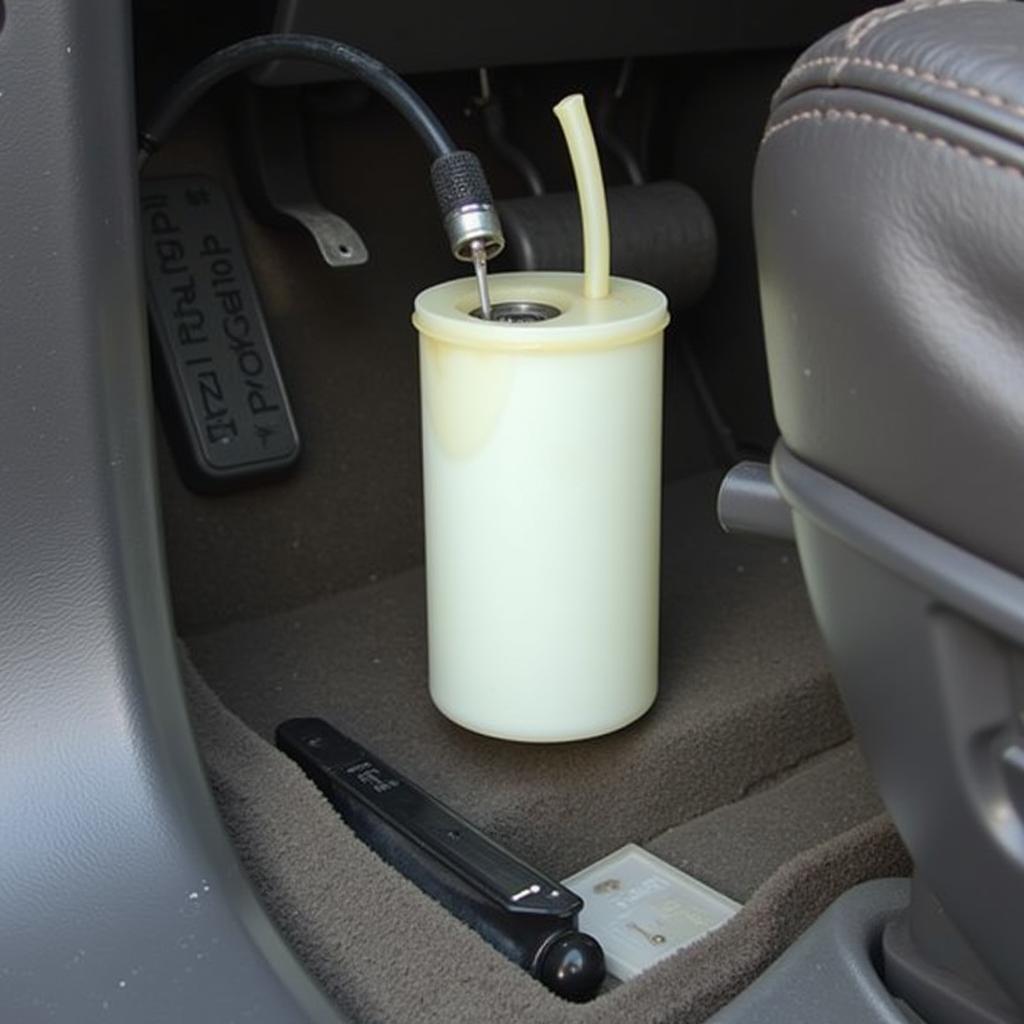A dead battery is one of the most common reasons why your car won’t start. Whether it’s a slow crank, clicking sounds, or complete silence, a “battery not starting” situation can be frustrating. This guide provides a step-by-step approach to diagnosing and solving your car battery woes, covering everything from simple checks to more advanced solutions.
Why is My Battery Not Starting My Car?
Several factors can lead to a “battery not starting” scenario. Understanding these can help you pinpoint the root cause and implement the right fix. Is it simply an old battery reaching the end of its lifespan? Perhaps you left your lights on, draining the battery overnight. Or maybe there’s a parasitic drain somewhere in your electrical system, slowly siphoning power even when the car is off. Other possibilities include corroded battery terminals, a faulty alternator, or even extreme temperatures.
Common Causes of a Dead Car Battery
- Age: Car batteries typically last 3-5 years.
- Leaving lights or accessories on: This is a classic culprit.
- Parasitic drain: A malfunctioning component can draw power even when the car is off.
- Corroded terminals: Corrosion inhibits proper electrical connection.
- Faulty alternator: A bad alternator won’t recharge the battery.
- Extreme temperatures: Both extreme heat and cold can affect battery performance. If you’re noticing the car battery sign on dashboard, you should investigate the problem immediately.
You can read more about battery warning signs on your dashboard here: battery sign in car dashboard.
Diagnosing the Problem: Is it Really the Battery?
Before you jump to conclusions, it’s crucial to diagnose the issue accurately. Sometimes, the problem isn’t the battery itself but something else entirely. For example, a bad starter motor can mimic a dead battery.
Checking the Battery
- Visual inspection: Look for any obvious signs of damage, cracks, or leaks. Check for sign of battery on dashboard.
- Terminal inspection: Examine the battery terminals for corrosion. Clean them with a wire brush and a baking soda solution if necessary. You can find more details regarding the battery indicator on the dashboard here: car battery sign on dashboard.
- Voltage test: Use a multimeter to check the battery voltage. A fully charged battery should read around 12.6 volts. A reading below 12.4 volts indicates a low charge.
 Testing Car Battery with Multimeter
Testing Car Battery with Multimeter
Other Potential Culprits
- Starter: A clicking sound when you turn the key could indicate a faulty starter.
- Alternator: If the battery keeps dying repeatedly, the alternator might not be charging properly.
- Ignition system: Problems with the ignition system can also prevent the car from starting.
- Parasitic drain issues: Like a 2006 Dodge Ram 2500 battery drain issue. Learn more about addressing parasitic drains here: 2006 dodge ram 2500 battery drain.
“A simple voltage test can save you time and money. It’s the first thing I do when a client complains about a ‘battery not starting’ issue,” says John Smith, Senior Automotive Diagnostic Technician at Advanced Auto Solutions.
Solutions and Fixes
Depending on the diagnosis, there are several ways to address a “battery not starting” problem.
Jump Starting Your Car
Jump-starting is a temporary solution for a dead battery. Ensure you connect the jumper cables correctly, red to positive and black to negative. Also, consider the battery sign on car dashboard for other potential issues.
Replacing the Battery
If the battery is old or damaged, replacement is the best option.
Charging the Battery
A slow charger can restore a discharged battery.
“Regular battery maintenance is key to preventing ‘battery not starting’ situations. Keep those terminals clean, and get your battery tested regularly,” advises Jane Doe, Lead Electrical Systems Engineer at AutoTech Innovations.
Conclusion
“Battery not starting” problems can be frustrating, but with a systematic approach, you can identify the cause and get your car running again. This guide provides the knowledge and tools you need to tackle the issue head-on. Regular maintenance and prompt attention to warning signs can save you time, money, and unnecessary headaches down the road.
FAQ
-
How often should I replace my car battery? Typically every 3-5 years, depending on usage and climate.
-
Can I jump-start my car with any other car? Yes, but ensure the voltage of the donor battery matches your car’s.
-
What is a parasitic drain? It’s a constant drain on the battery even when the car is off, often caused by a malfunctioning electrical component.
-
How can I prevent my car battery from dying? Turn off lights and accessories, clean the terminals, and get regular battery checks.
-
What does a clicking sound when starting the car indicate? It could point towards a faulty starter motor.
-
Why is my battery draining overnight? This points to a parasitic drain; something is drawing power even when the car is off.
-
Is it safe to jump-start a car myself? Yes, if you follow the correct procedures and safety precautions.



